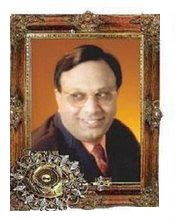
Rail transport is a commonly used mode of long-distance transportation in India. Almost all rail operations in India are handled by a state-owned company, Indian Railways, under the federal Ministry of Railways. The rail network traverses the length and breadth of the country, covering a total length of 63,140 kilometres (39,233 mi). It is said to be the 4th largest railway network in the world, transporting over 6 billion passengers and over 350 million tonnes of freight annually. Its operations cover twenty-eight states and three union territories and also provide limited service to Nepal, Bangladesh and Pakistan.
Railways were introduced to India in 1853,and by the time of India's independence in 1947 they had grown to forty-two rail systems. In 1951 the systems were nationalised as one unit—Indian Railways—to form one of the largest networks in the world. The broad gauge is the majority and original standard gauge in India; more recent networks of metre and narrow gauge are being replaced by broad gauge under Project Unigauge. The steam locomotives have been replaced over the years with diesel and electric locomotives.
Locomotives manufactured at several places in India are assigned codes identifying their gauge, kind of power and type of operation. Colour signal lights are used as signals, but in some remote areas of operation, the older semaphores and disc-based signalling are still in use. Accommodation classes range from general through first class AC. Trains have been classified according to speed and area of operation. Many trains are officially identified by a four-digit code, though many are commonly known by unique names. The ticketing system has been computerised to a large extent, and there are reserved as well as unreserved categories of tickets.
Railways were introduced to India in 1853,and by the time of India's independence in 1947 they had grown to forty-two rail systems. In 1951 the systems were nationalised as one unit—Indian Railways—to form one of the largest networks in the world. The broad gauge is the majority and original standard gauge in India; more recent networks of metre and narrow gauge are being replaced by broad gauge under Project Unigauge. The steam locomotives have been replaced over the years with diesel and electric locomotives.
Locomotives manufactured at several places in India are assigned codes identifying their gauge, kind of power and type of operation. Colour signal lights are used as signals, but in some remote areas of operation, the older semaphores and disc-based signalling are still in use. Accommodation classes range from general through first class AC. Trains have been classified according to speed and area of operation. Many trains are officially identified by a four-digit code, though many are commonly known by unique names. The ticketing system has been computerised to a large extent, and there are reserved as well as unreserved categories of tickets.
This article is about the technical workings and operations of railways in India which are run by the Indian Railways.

No comments:
Post a Comment